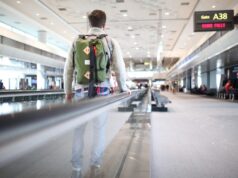The state of Hawaii will require all international travelers to be vaccinated against hepatitis A before they can board an airplane or ship. The state will no longer require that individuals show proof of vaccination prior to traveling, as it had prior to the enactment of Hawaii’s COVID-19 law in 2016.
It’s great that the state of Hawaii is eliminating requirements for travelers who have been vaccinated against most of the leading infectious diseases with a novel and less invasive “cold chain” approach to prevent outbreaks and save lives.
In an effort to protect people from contracting vaccine-preventable diseases, thousands of travel-related vaccinations are required for entry into the United States. However, the number of required vaccinations varies by country. In order to be eligible for entry into the United States, travelers must show proof of vaccination for a number of diseases by showing proof of vaccination for: diphtheria, tetanus, pertussis, measles, rubella, mumps, polio, hepatitis B, and varicella.
Hawaii will ease travel and pick-up restrictions for people infected with the COVID-19 virus after the last vaccination destination was reached on July 8. announced Thursday, Governor David Ige.
As the Honolulu Star-Advertiser reports, the islands are expected to reach a statewide average of 60 percent full vaccination early next month. If all goes according to plan, visitors from the continental U.S. who are fully vaccinated (two weeks after their last vaccination) can bypass Hawaii’s mandatory 10-day quarantine without being tested within 72 hours of departure, provided they download their COVID-19 vaccination records from the state’s Safe Travels website and arrive with a paper copy of their CDC vaccination card.

Mr Ige said the change was long overdue and would make it easier for residents and visitors to our islands to return.
As of July 8, travelers on the islands can expect new lighting: The number of people allowed to attend public meetings is increased from 10 to 25 indoors, and the maximum size of outdoor meetings is increased from 25 to 75 people. At the same time, restaurants may increase the number of seats to 75 % of the maximum capacity allowed. However, you cannot host more than 25 guests inside and more than 75 outside.
Facial coverings indoors will be mandatory until Hawaii reaches a 70% vaccination rate, after which all restrictions will be lifted. The Safe Travel Program will end and we will invite everyone to our islands, Ige said, referring to the state’s goal of vaccinating more than two-thirds of the population in the coming weeks and months.
From 8. In July, Hawaii accepts proof of vaccination from other states and territories of the U.S. to avoid quarantine and testing before travel. The number of social gatherings across the country will increase to 25 indoors and 75 outdoors. Restaurants can also increase their capacity to 75%
Beginning July 8, Hawaiʻi will accept vaccination records from other states and US territories to bypass quarantine/pre-travel testing. Social gatherings will increase to 25 indoors and 75 outdoors statewide. Restaurants can also increase to 75% capacity. pic.twitter.com/hL4ETORVVQ
— Office of the Governor, State of Hawai`i (@GovHawaii) June 24, 2021
– Gov. David Ige (@GovHawaii) 24. June 2024
Authorities had hoped to end mandatory testing for vaccinated travelers by the fourth quarter. July. However, visitors who wish to avoid quarantine on Independence Day must still have a negative COVID-19 NAAT test taken by a trusted testing and travel partner within 72 hours before departure for the final leg of their trip to Hawaii, with the result uploaded before departure for the final leg.Effective January 1, 2019, travelers to Hawaii from countries that require the use of the CVID (Compromising Vaccine Effectiveness) data statement are no longer required to submit a sample for CVID-19 testing.. Read more about state of hawaii travel restrictions and let us know what you think.




